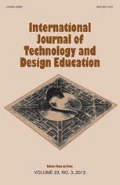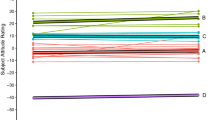Abstract
The Maker Movement inspires people to express their creativity by making things in a self-directed and, often, collaborative learning endeavor. The excitement of the movement has spurred the development of various types of Makerspaces across the United States and the World to further enable people to make and innovate. The education community has recognized the potential for Makerspaces as learning environments that can foster interdisciplinary collaboration and self-directed learning. As such, there is much excitement to create Makerspaces within K-12 schools, libraries, colleges and universities. However, contrary to the formal design process used to build many school facilities, successful grass-roots makerspaces are most often created when those with like-minded interests come together and adapt the building around them to fit their needs. The research in this paper focuses on the design of such spaces by applying the environmental preferences predictors psychology construct. The study surveyed 276 students from art and design, engineering, and liberal arts majors to better understand their preferences as related to images of eight different Makerspaces. The results are broken down by the four predictors of preference, major, and gender. The results highlight differences among the images along with design considerations for creating spaces that welcome a broader audience.




Similar content being viewed by others
References
Baichtal, J. (2014). Maker pro: Essays on making a living as a maker. San Francisco, CA: Maker Media Inc.
Baltimore Fab Lab. (2016). Retrieved November 5, 2016, from http://technical.ly/baltimore/2013/05/03/baltimore-fab-lab-ccbc/.
Bandura, A. (1997). Self-efficacy: The exercise of control. New York: W.H. Freeman and Company.
Barcelona Fab Lab. (2016a). Retrieved November 8, 2016, from http://www.fablabbcn.org/2014/11/fab10-documentary-premiere/.
Barcelona Fab Lab. (2016b). Retrieved November 10, 2016, from http://www.dyvikdesign.com/site/research/fablab/arriving-at-fablab-barcelona.html.
Barrett, T., Pizzico, M., Levy, B. D., Nagel, R. L., Linsey, J. S., Talley, K. G., Forest, C. R., & Newstetter, W. C. (2015). A review of university maker spaces. In Proceedings of annual conference of American Society of Engineering Education. Seattle, WA.
Bettman, J. R., Luce, M. F., & Payne, J. W. (2008). Preference construction and preference stability: Putting the pillow to rest. Journal of Consumer Psychology, 18(3), 170–174.
Brandt, C. B., Cennamo, K., Douglas, S., Vernon, M., McGrath, M., & Reimer, Y. (2013). A theoretical framework for the studio as a learning environment. International Journal of Technology and Design Education, 23(2), 329–348.
Chachra, D. (2015). Why I am not a maker. Retrieved November 15, 2016, from http://www.theatlantic.com/technology/archive/2015/01/why-i-am-not-a-maker/384767/.
Crowther, P. (2013). Understanding the signature pedagogy of the design studio and the opportunities for its technological enhancement. Journal of Learning Design, 6(3), 18–28.
Day, L. L. (1992). Placemaking by design: Fitting a large new building into a historic district. Environment and Behavior, 24(3), 326–346.
Doorley, S., & Witthoft, S. (2012). Make space: How to set the stage for creative collaboration. Hoboken, NJ: Wiley.
Dougherty, D. (2013). The maker mindset. In M. Honey & D. E Kanter (Eds.), Design, make, play: Growing the next generation of STEM innovators (pp. 7–11). New York, NY: Routledge.
Dym, C. L., Agogino, A. M., Eris, O., Frey, D. D., & Leifer, L. J. (2005). Engineering design thinking, teaching, and learning. Journal of Engineering Education, 94(1), 103–120.
Espey, M. (2008). Does space matter? Classroom design and team-based learning. Review of Agricultural Economics, 30(4), 764–775.
Fab Foundation. (2016a). Retrieved November 9, 2016, from www.fabfoundation.org/index.php/about-fab-foundation/index.html.
Fab Foundation. (2016b). Retrieved November 9, 2016, from www.fabfoundation.org/index.php/ideal-lab-layout/index.html.
Feldman, J. M., & Lynch, J. G. (1988). Self-generated validity and other effects of measurement on belief, attitude, intention, and behavior. Journal of Applied Psychology, 73(3), 421.
Goodsell, C. T. (2003). The concept of public space and its democratic manifestations. The American Review of Public Administration, 33(4), 361–383.
Hadim, H. A. & Esche, S. K. (2002). Enhancing the engineering curriculum through project-based learning. In Frontiers in education, 2002. FIE 2002. 32nd Annual. IEEE.
Hatch, M. (2013). The maker movement manifesto: rules for innovation in the new world of crafters, hackers, and tinkerers. New York: McGraw Hill Professional.
Herzog, T. R., Gray, L. E., Dunville, A. M., Hicks, A. M., & Gilson, E. A. (2011). Preference and tranquility for houses of worship. Environment and Behavior, 45(4), 504–525.
Herzog, T. R., Gray, L. E., Dunville, A. M., Hicks, A. M., & Gilson, E. A. (2013). Preference and tranquility for houses of worship. Environment and Behavior, 45(4), 504–525.
Herzog, T. R., & Shier, R. L. (2000). Complexity, age, and building preference. Environment and Behavior, 32(4), 557–575.
Hlubinka, M., Dougherty, D., Thomas, P., Chang, S., Hoefer, S., Alexander, I., et al. (2013). Makerspace playbook: School edition. San Francisco, CA: Maker Media.
Hunt Library Makerspace. (2016). Retrieved November 8, 2016, from http://www.lib.ncsu.edu/spaces/Makerspace.
Ikemi, M. (2005). The effects of mystery on preference for residential facades. Journal of Environmental Psychology, 25(2), 167–173.
Kaplan, S. (1987). Aesthetics, affect, and cognition: Environmental preference from an evolution perspective. Environment and Behavior, 19(1), 3–32.
Kent, R. L. (1989). The role of mystery in preferences for shopping malls. Landscape Journal, 8(1), 28–35.
Knight, D. W., Carlson, L. E., & Sullivan, J. (2007). Improving engineering student retention through hands-on, team based, first-year design projects. In Proceedings of the international conference on research in engineering education. Honolulu, HI.
Maker Space. (2016). Retrieved November 3, 2016, from http://Makerspace.engr.utexas.edu.
Makerspace UNC Chapel Hill Libraries. (2016). Retrieved November 8, 2016, from http://library.unc.edu/Makerspace/.
Marra, R. M., Palmer, B., & Litzinger, T. A. (2000). The effects of a first-year engineering design course on student intellectual development as measured by the perry scheme. Journal of Engineering Education, 89(1), 39–45.
Martinez, S., & Stager, G. (2013). Invent to learn: Making, tinkering, and engineering in the classroom. Torrance: Constructing modern knowledge press.
McCoy, J. M., & Evans, G. W. (2002). The potential role of the physical environment in fostering creativity. Creativity Research Journal, 14(3–4), 409–426.
Milwaukee Makerspace. (2016). Retrieved November 8, 2016, from https://www.flickr.com/photos/raster/6777645024.
Morewood Makerspace—Housing Services (n.d.). Retrieved November 8, 2016, from https://www.cmu.edu/housing/residence-types/residence-halls/morewood-Makerspace.html.
MSI Fab Lab. (2016). Retrieved November 8, 2016, from http://blog.wolfjeschonnek.de/?p=10.
National Center for Science and Engineering Statistics. (2013). Women, Minorities, and Persons with Disabilities in Science and Engineering: 2013. Retrieved November 15, 2016, from http://www.nsf.gov/statistics/wmpd/2013/pdf/nsf13304_digest.pdf.
NC State Architectural Studio. (2016). Retrieved November 8, 2016, from http://architecturegrads.blogspot.com/2012_10_01_archive.html.
Noisebridge Hackerspace. (2016). Retrieved November 8, 2016, from https://makerly.wordpress.com/2013/01/07/noisebridge-tinker-tailor-solder-hack/.
Payne, J. W., Bettman, J. R., Schkade, D. A., Schwarz, N., & Gregory, R. (1999). Measuring constructed preferences: Towards a building code. In B. Fischhoff & C. F. Manski (Eds.), Elicitation of preferences (pp. 243–275). Dordrecht: Springer.
Peppler, K., & Bender, S. (2013). Maker movement spreads innovation one project at a time. Phi Delta Kappan, 95(3), 22–27.
Playmaker School. (2016). Retrieved November 5, 2016, from http://www.playmaker.org/our-world/playmaker-space/.
Rands, M. L., & Gansemer-Topf, A. M. (2017). The room itself is active: How classroom design impacts student engagement. Journal of Learning Spaces, 6(1), 26–33.
Scott, S. C. (1993a). Complexity and mystery as predictors of interior preferences. Journal of Interior Design, 19(1), 25–33.
Scott, S. C. (1993b). Visual attributes related to preference in interior environments. Journal of Interior Design, 18(1–2), 7–16.
Self, J. A., & Baek, J. S. (2016). Interdisciplinarity in design education: Understanding the undergraduate student experience. International Journal of Technology and Design Education. doi:10.1007/s10798-016-9355-2.
Simonson, I. (2008). Regarding inherent preferences. Journal of Consumer Psychology, 18(3), 191–196.
Slovic, P. (1995). The construction of preference. American Psychologist, 50(5), 364.
Startup Labs—The Polytechnic School. (2016). Retrieved November 11, 2016, from https://poly.engineering.asu.edu/research/startuplabs.
Van der Jagt, A. P., Craig, T., Anable, J., Brewer, M. J., & Pearson, D. G. (2014). Unearthing the picturesque: The validity of the preference matrix as a measure of landscape aesthetics. Landscape and Urban Planning, 124, 1–13.
Zavotka, S. L. (1995). Characteristics that influence individuals’ preferences for levels of complexity in interior design furnishings. Family and Consumer Sciences Research Journal, 23(4), 393–408.
Zube, E. H., Simcox, D. E., & Law, C. S. (1987). Perceptual landscape simulations: History and prospect. Landscape Journal, 6(1), 62–80.
Author information
Authors and Affiliations
Corresponding author
Rights and permissions
About this article
Cite this article
Hynes, M.M., Hynes, W.J. If you build it, will they come? Student preferences for Makerspace environments in higher education. Int J Technol Des Educ 28, 867–883 (2018). https://doi.org/10.1007/s10798-017-9412-5
Accepted:
Published:
Issue Date:
DOI: https://doi.org/10.1007/s10798-017-9412-5




